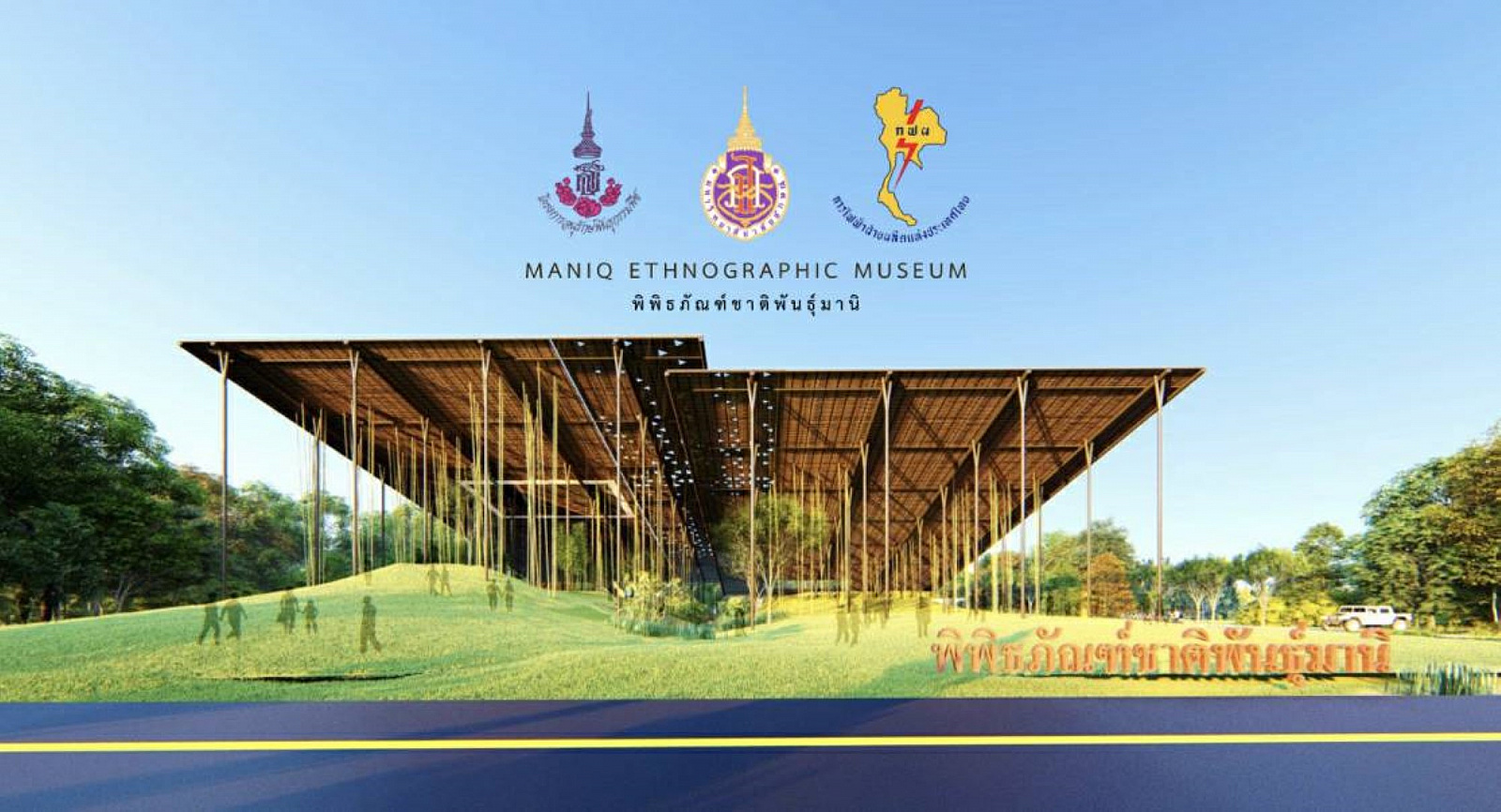News
The Natural History Museum of Walailak University has its origins in the Plant Genetic Conservation Project under the Royal Initiation of Her Royal Highness Princess Maha Chakri Sirindhorn (RSPG).


 Professor Doctor Tawadchai Suppadit, vice president of a section on planning and development strategy, announced that Walailak University (WU) was building the Natural History Museum as an RSPG project and to continue RAMA 9’s resolve for resource conservation. WU’s location in the upper south provides it with beautiful and abundant natural resources. On an area adjacent to the royal mountains and the Gulf of Thailand, the university has outstanding physical, biological, and intellectual heritage from which to draw. The building design is inspired by the number 8 and will sit alongside the Krungching waterfall and beach court. The site is an expression of the precept “Follow the footsteps of the prince from the top of the mountain to the bottom of the sea” and is intended to honor Her Royal Highness Princess Maha Chakri Sirindhorn. With a construction budget of more than 300 million baht and progress now at about 30% complete, it will be fully operational in 2022.
Professor Doctor Tawadchai Suppadit, vice president of a section on planning and development strategy, announced that Walailak University (WU) was building the Natural History Museum as an RSPG project and to continue RAMA 9’s resolve for resource conservation. WU’s location in the upper south provides it with beautiful and abundant natural resources. On an area adjacent to the royal mountains and the Gulf of Thailand, the university has outstanding physical, biological, and intellectual heritage from which to draw. The building design is inspired by the number 8 and will sit alongside the Krungching waterfall and beach court. The site is an expression of the precept “Follow the footsteps of the prince from the top of the mountain to the bottom of the sea” and is intended to honor Her Royal Highness Princess Maha Chakri Sirindhorn. With a construction budget of more than 300 million baht and progress now at about 30% complete, it will be fully operational in 2022.
The building is located on the edge of a large reservoir, inside WU’s botanical park, and sits with a backdrop of the royal mountains. There will be 6 groups of exhibitions including 1) The Khao Luang resource room: exhibition of physical resources of the royal mountain range, including flora, fauna, birds, fungi and microorganisms which will be presented to show how to use resources sustainably 2) The tribal and indigenous culture room: presentation of ethnobotany—the use of plants in the daily life of indigenous people 3) Pak Phanang River Basin management room: Showcase on the performance of the project developed on a royal initiative, His Majesty King Rama 9’s sustainable water resource management for agriculture in the Pak Phanang basin area 4) The Coastal Chambers room: exhibition on the physical and biological aspects of the beach to understand the use of raw materials for coastal communities, for the economy and daily life, for a physical understanding of each form of the beach, and for traditional fisheries and life in the coastal ecosystem 5) Abundant Gulf of Thailand resources room: display using 4 main virtual aquariums, namely shark or ferocious fish, sea turtles, coral, and beautiful fish along with a system of light and sound for the audience to see and hear the communication and movement of those animals 6) “Krirkkrai” Princess Conservator room: Tribute honoring Princess Maha Chakri Sirindhorn and her work on the conservation of 3 resources: physical, biological, and cultural wisdom. The operation of the RSPG project and the experience of visitors will underscore the purpose of the Natural History Museum. According to her instructions on Wednesday, October 19, 2005, "Ultimately, I want everyone to recognize and value local resources, knowing conservation and sustainable use. Also, education for the conservation of other natural resources, such as soil, rocks, minerals, and all types of living things. All of the above things are related. Anything that is missing will affect the existence of the nation and the people. Besides studying the state of natural resources, educating people is important. For everyone to use it together, sustainable forever ".
Professor Dr. Tawatchai added that in addition to the building of the Natural History Museum within the Botanical Park area, there is also a building for groups of guests, a camping area, a nature trail, and a Treetop Tower connecting the Canopy Walkway and overlooking live animals which are present for study. Moreover, the Botanical Park has a large reservoir that can host activities or water sports for tourists. The Botanical Garden is a space for experiences, inspiration, and exchange. It will contribute to the creation of an academic learning process and to creating consciousness on the conservation of sustainable local cultural resources and wisdom. A museum will also be built to support "Ethnography" (Sakai), funded by the Electricity Generating Authority of Thailand (EGAT) in the amount of 2,000,000 baht. This will serve as a learning center on the wisdom of ethnic life cultures living amid forest resources and which are based on balance and sufficiency.
Students, residents, and tourists can visit and participate in interesting activities at the Botanical Garden, Walailak University. For more information please contact Botanical Garden, Walailak University 222 Thai Buri Sub-district, Tha Sala District, Nakhon Si Thammarat Province 80160 Tel: 0-7547-6104-5 email: wbp@mail.wu.ac.th or Facebook page: WBP Walailak Botanic Park.




By Phubes Thraisuwan, Division of Corporate Communication's trainee




